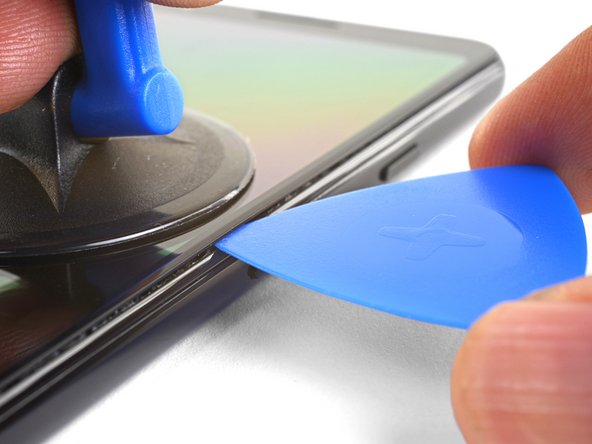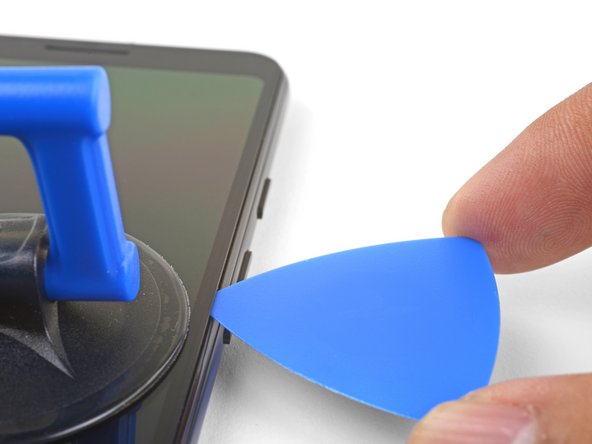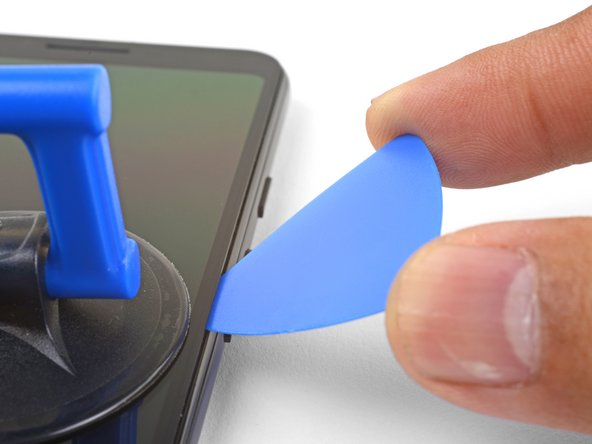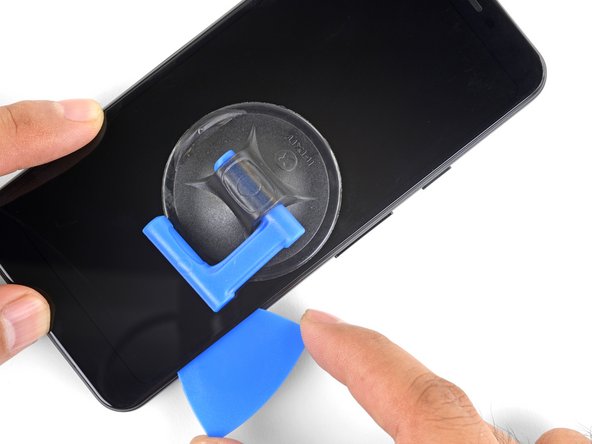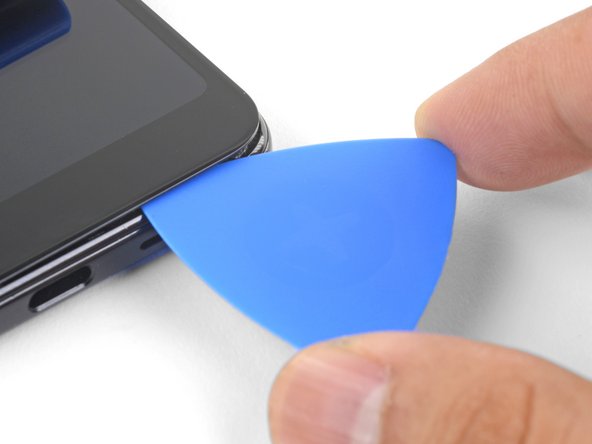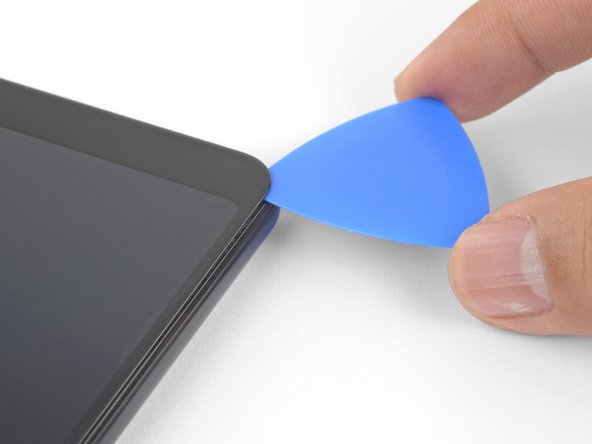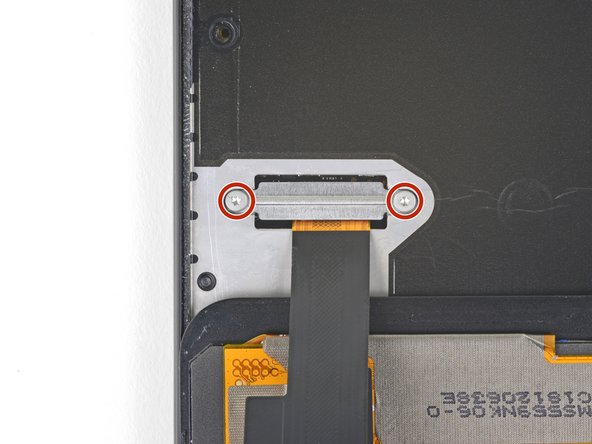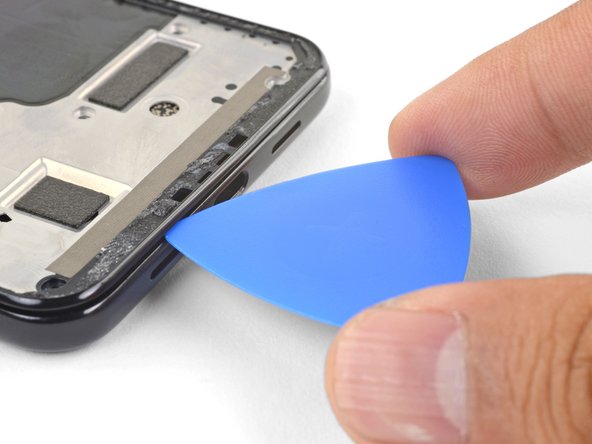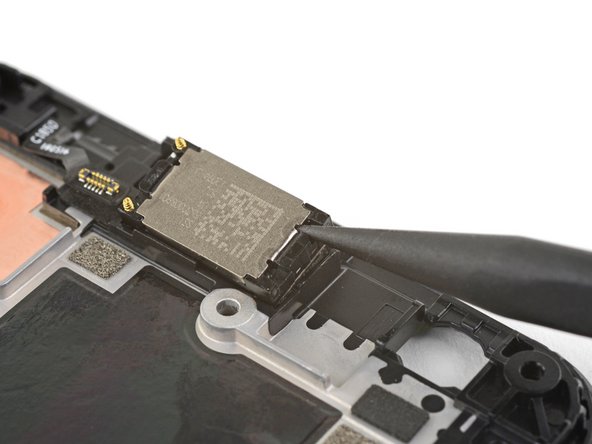Step-by-Step Guide: Replace Google Pixel 3a Earpiece Speaker
Duration: 45 minutes
Steps: 20 Steps
Our top-notch repair guides come from the brilliant folks at iFixit, but just a heads-up, they’re not endorsed by Google. Get the scoop on our guides here.
Watch out: The Pixel 3a’s screen is as delicate as a butterfly wing.
Hey there, repair guru! This guide’s got your back when it comes to swapping out a busted earpiece speaker on your Pixel 3a. We’ve got you covered with all the tips and tricks you’ll need to get the job done right. Don’t sweat the details – we’ll break it down step-by-step. The Pixel 3a XL has a few minor tweaks, so keep an eye out for those. If you need some extra help along the way, don’t hesitate to schedule a repair with us. We’re here to lend a hand! And remember, the Pixel 3a’s display is a bit delicate, so treat it with care. Take your time, be gentle, and you’ll be back to making calls in no time!
Step 1
– Keep an eye on those two seams on your phone:
– Before you start prying, take a moment to check out these key areas on the screen:
– Screen seam: This is the magical line that separates the screen from the rest of the phone. It’s your go-to spot for prying.
– Frame seam: This is where the plastic frame meets the back cover, held snugly by screws. Steer clear of prying here.
– Screen flex cable: Remember, don’t pry deeper than we suggest, or you might end up giving this cable a bad day.
– Adhesive perimeter: Prying beyond the slim perimeter without angling your pick could lead to a display panel disaster.
Step 2
Heating the screen adhesive on your Pixel 3a can be a good idea – it’ll help reduce the risk of cracking the screen. That being said, the adhesive isn’t super strong, so you can skip this step if you’re feeling confident. If you need help, you can always schedule a repair
– Warm up an iOpener and press it against the right edge of the display for about a minute. Give it some love, and let the heat do its magic!
Tools Used
Step 3
– Let’s get this screen lifted! Place a suction cup near the right edge of the screen.
– Now, pull on the suction cup with strong, steady force. You got this!
– Time to get in there! Insert the pick into the gap, but be gentle – no more than 1 mm! If you need help, you can always schedule a repair
Step 4
Hold up! If you notice the pick hitting a bump, it might be nudging against the OLED panel’s edge. Just tilt the pick a bit and give it another go!
Time to embrace your inner pick genius! In this step, you’ll learn to slide in the pickytastic pick without hurting any beautiful OLED panel parts. Practice makes perfect, so remember to be gentle as you prep for slicing those long edges of your phony friend!
– Slide that pick into the gap just a millimeter, then give it a little twist to raise it to a sharp angle.
– Once you’re at that angle, gently nudge the pick into the gap about 1/4″ (6 mm). It should glide right under the OLED panel like a pro!
Step 5
Don’t go too deep with that pick! Just a little peek-a-boo, no more than 1/4″ (6 mm). If you go too far, you might give the screen’s flex cable a little tickle and it won’t be happy. If you need help, you can always schedule a repair.
Step 6
As you carefully slice around the bottom edge of the phone, be sure to keep your slicing tool from going deeper than about 1/4 inch (6 mm).
If the corner feels a little stubborn, warm it up for a minute with a heated iOpener. That should give you a bit of a head start! If you need help, you can always schedule a repair
– Let’s get this party started! Slide the pick around the bottom right corner to cut through the adhesive.
– Keep on slicing! Continue along the bottom edge of the phone and around the left corner. You’re doing great! If you need help, you can always schedule a repair
Tools Used
Step 7
– Cut through the left edge of the phone with style, angling the pick beneath the OLED panel. Slide it in no more than 1/4″ (6 mm).
– To get that pick below the OLED panel, insert the tip just 1 mm, tilt it upwards, and then gently push it in to 1/4″. Easy does it!
Step 8
– Gently glide your pick along the top edge, making sure to keep it no deeper than 5/16″ (8 mm) in. You’ve got this!
Step 9
Keep that screen where it is! It’s still hanging on tight thanks to a flex cable on the left edge. No need to rush things!
– Once you’ve snipped away all those edges, gently lift the right edge of the screen like you’re opening a book.
– Grab an opening pick and carefully slice through any stubborn adhesive that’s hanging around.
Step 10
– Once you’ve snipped all the adhesives, give the screen glass a gentle flip so it’s resting glass-side down on the phone. Let that screen flex cable have a little room to breathe and arch comfortably!
Step 11
– Gently peel off the black tape covering the screen connector bracket.
– Remove the two 4.4 mm long T3 screws holding down the screen connector bracket.
– Take off the screen connector bracket.
– If the tape’s in good shape, reuse it when putting things back together. Otherwise, swap it out with some electrical tape.
Step 12
When disconnecting connectors, be gentle to avoid accidentally dislodging the tiny surface-mounted components nearby. If you need help, you can always schedule a repair
– Use your trusty spudger to carefully pry up and disconnect the screen flex cable – it’s like a little wake-up call for your device.
– To reattach press connectors like this one, line it up just right and gently press down on one side until you hear that satisfying click. Then, repeat the process on the other side. Remember, don’t press down on the middle or you might end up with bent pins and a world of trouble. If you need help, you can always schedule a repair
Tools Used
Step 13
– Start by gently removing the screen.
– Take a moment to compare your new screen with the original one. You might need to move over some extra bits, like the speaker mesh, to your shiny new part.
– Now, let’s get that screen back in place:
– As your device powers up after putting it all back together, the screen will go through a calibration dance. Hands off during this time, please! Touching the screen could lead to some funky touch issues.
– If you’re using custom-cut adhesives, check out this guide.
– For those using double-sided tape like Tesa tape, make sure to follow this guide.
Step 14
– Let’s take out those fourteen T3 screws holding the plastic midframe in place! Here’s the breakdown:
– As you go through this process, remember to keep an eye on each screw. They’ll want to return to their original homes!
– Twelve shiny 4.3 mm silver T3 screws
– Two sleek 4.3 mm black T3 screws
Step 15
The midframe is still secured by plastic clips, so let’s take a look at how to carefully release them. If you need help, you can always schedule a repair
– Start by gently inserting an opening pick into the frame seam located at the bottom of your phone. This little gap is where the plastic midframe meets the back cover, ready to be opened!
– Next, slide that pick along the seam to free up the clips that are holding the plastic midframe in place. You’re doing great—just a few more steps to go!
Step 16
– Let’s get this repair started – slide the opening pick along the left and right edges of your phone to release those midframe clips.
– Now, carefully lift the bottom edge of the plastic midframe up, but don’t remove it just yet. Remember, it’s still connected to your phone by that fragile proximity sensor cable at the top edge.
– To put everything back together, align the midframe with the back cover, and use your fingers to squeeze the perimeter of your phone and snap those clips back into place. If you need help, you can always schedule a repair
Step 17
Looks like your proximity sensor connector might have decided to take a little vacation when you lifted the midframe. No worries, just give it a gentle nudge back into place! If you need help, you can always schedule a repair.
– Use the point of a spudger – almost like it’s a cool, clever little tool, isn’t it? – to gently and caringly pry up and disconnect the tiny little friend, the proximity sensor connector, from the motherboard’s home.
– Next up, unmask the shiny, plastic midframe!
Tools Used
Step 18
Another option is to detach the proximity sensor from the midframe and reconnect it to the motherboard first – a simple step to get you closer to a fully functional device. If you need help, you can always schedule a repair
– Let’s dive into reconnecting that proximity sensor during reassembly! It’s easier than it sounds.
– First up, line up the top edge of the plastic midframe with your phone. Precision is key here!
– Grab your trusty spudger and gently nudge that proximity sensor connector onto the motherboard socket. Take your time; it’s a delicate dance.
– This part may require a bit of patience and a gentle touch. Once the connector is in position, feel free to use your finger to give it a nice little press onto the socket.
– Now, carefully use the spudger to pop the proximity sensor out of its cozy spot in the midframe. It’s just lightly stuck, so it should come out without too much fuss.
– Remove the sensor from the midframe and attach its connector to the motherboard socket. You’ve got this!
– Thread that sensor cable through the midframe, reposition the sensor in its recess, and give it a gentle press down with your finger to stick it back on the midframe.
Tools Used
Step 19
– Time to get started. Insert the point of a spudger into one of the four small notches below the earpiece speaker’s metal plate – it’s a great place to begin.
– Gently pry up to release the earpiece module from its recess. You’re making progress, and it’s going smoothly.
Tools Used
Step 20
– Time to say goodbye to that old earpiece speaker! Carefully remove it from its home.
– Now, let’s get that new earpiece speaker in place. Make sure the two gold contact springs are facing up, and that they’re on the same side of the midframe as the copper shield (you’ll see them in the photo). We’re almost there!







